
- Bullfighting in Mexico City (Corrida de Toros)

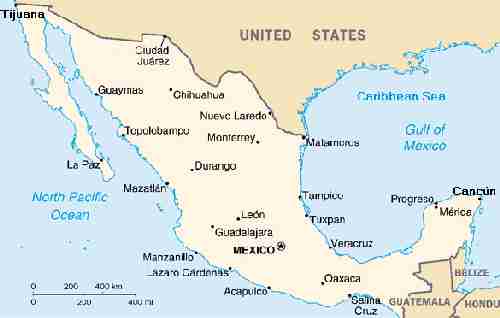

A bullfight is comprised of three stages.
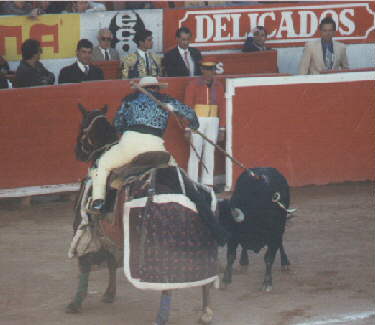
First, the gates are opened and the bull comes charging in. Three or four men wielding red capes torment the bull by waving the cape, then hiding behind wooden walls just before it can get to them. This keeps the bull running round and round the ring, getting more and more tired. After a couple of minutes, two men on horseback enter the ring. The horses they are riding are wearing thick RED padding on one side, all the way to the ground. The bull sees the red and charges the horse, goring it in the side. The horse is trained to push back against the bull, but is also blindfolded so it doesn't freak out. At the same time, the rider jabs a spear between the bull's shoulderblades. The idea of this is to further weaken, and maybe even annoy, the bull. If he has done a good job, he will receive a round of applause. If not (for example, missing his mark, or stabbing it too many times to try and HIT his mark), the audience will whistle at him (equivalent to being booed).
The end of the first stage is signalled by trumpets.
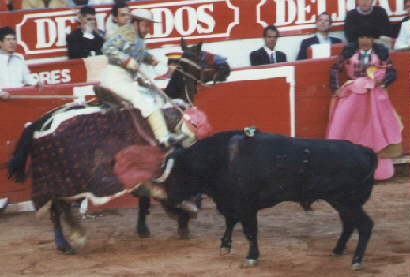
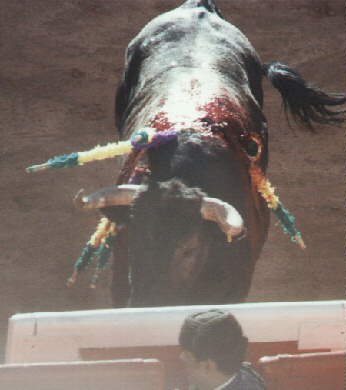
The bull is run around the ring some more while a man, the banderillo, readies himself for the second stage. Once the bull has been moved into position, facing the banderillo, the man charges the bull, and the bull, likewise, charges the man. At the last minute, the banderillo dodges sideways, delivering two darts (banderillas) into the bulls back. If the darts have been placed next to each other, just behind the shoulder blades, he has done a good job, for which he will receive a round of applause. If not - the dreaded whistles. He repeats this two more times, hopefully delivering all six darts. The darts have a barb to keep them in place for the duration of the fight to create maximum irritation and frustration.
The end of the second stage is signalled by trumpets.
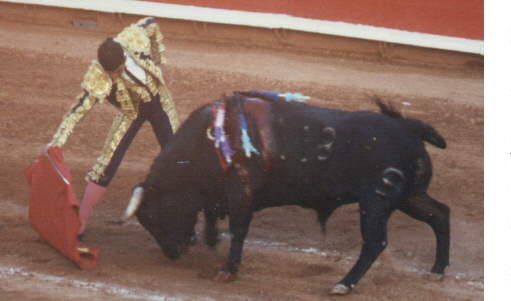
The final stage is where the Matador (literally translated as 'Killer') puts on a display of technique and bravery, tempting the bull with the red cape; frustrating it each time he pulls it away as it tries its best to gore the elusive piece of material. Each successful charge yields a cry of OLE! from the audience.
After the Matador has worn the bull down enough, he is handed a sword. This sword will deliver the killing stroke. After a few more charges, the Matador lines the bull up so they are facing each other head on. He points the sword toward his target. At the appropriate moment he charges (the bull, exhausted, is often unwilling to charge back), thrusting the sword between the shoulder blades, driving it all the way to the handle. A well placed sword will pierce the heart, killing the bull as quickly as possible. The bull will often take 10-15 seconds to drop to its knees, meanwhile the four helpers flash the capes near the bull, running it around on the spot in circles to increase the blood flow.
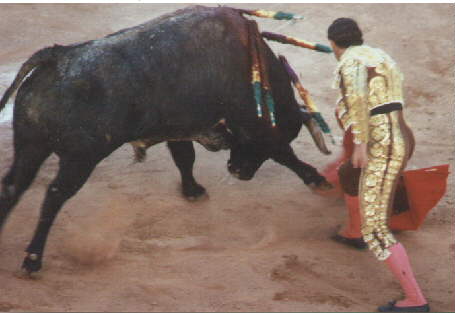
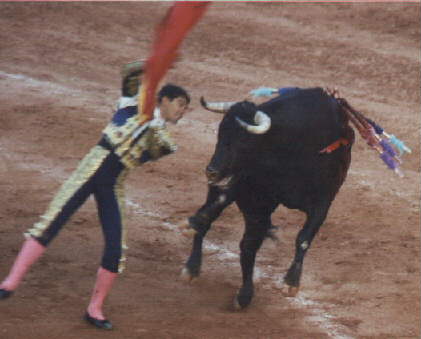

After the bull falls to its knees, a man will walk up behind it and drive a small knife into its neck, severing the spinal chord (you know, so it doesn't have to suffer too long).
At this point the fight is over.
If the Matador has done a good job, he will be rewarded with the ear of the bull. If he has done a very good job, he will get both ears. If he has done an extremely good job, he will get both ears and the tail. In the rare case, if the Matador has done an extremely good job, AND the bull has shown strength and spirit, the judge will rule that the bull will live, and will be set out for breeding.
After being presented with a prize, the Matador does a lap of the arena, giving thanks to the audience and the judge.